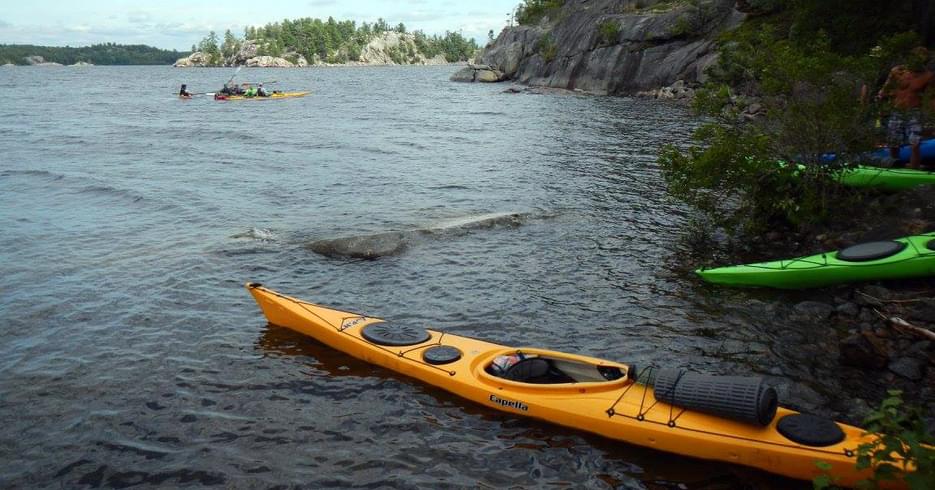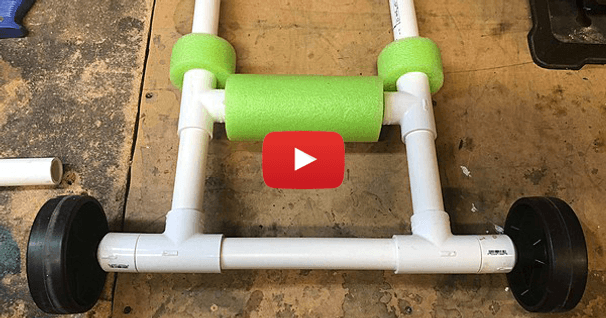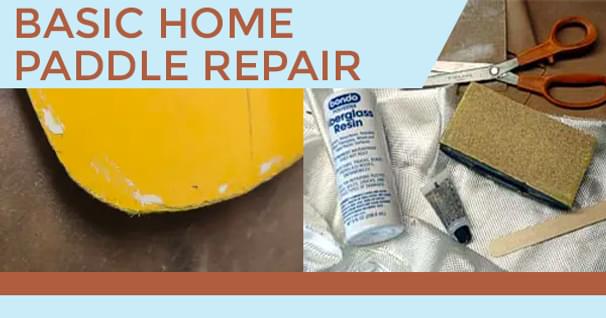Keeping Your Hull in Tip-top Condition
In a perfect world, your new kayak would glide through the years without a scratch or dent on its smooth polyethylene - or Royalex, or Kevlar, or urethane, or industrial nylon - hull. But we all know that, in reality, things happen, boats take a beating, and even in the best of circumstances some occasional maintenance is necessary.
We're lucky, these days most boats are designed to be maintenance-free out of the box. Save the occasional gouge or crack - something that Dagger claims happens to less than 1% of their hard bodied boats - a kayak will most likely never need to visit an authorized dealer, never run into any major structural problems, and serve just fine for many years with minimal effort. But that isn't to say that some general upkeep isn't a good idea. Over time, general weathering can cause irreparable damage to your hull, beyond what happens to the hardware and fittings. Below, you'll find a list of general manufacturer's suggestions on how best to maintain a kayak hull for the long haul.
Cleaning
It's a fact of life in the modern world that rivers, bays, and sometimes even inland lakes are nasty, polluted, disgusting places to play. We all put that out of our minds while we're out there, but our boats don't forget. In fact, they happily bring billions of their horrific little microbe friends home at they end of the day, where they can come into contact with our families, our pets.
OK, enough of that. The fact of the matter is, a clean boat is a good thing, and most hulls these days make cleaning a fairly straightforward process. The general rule, when it comes to the creepy crawlies that your boat picks up from the water, is to rinse the hull down with freshwater after every trip, a habit that will also save your metal and rubber parts from damaging salt corrosion. Easy enough, but what about those paddlers who - and you know who you are - can't rest until their kayak is really, truly, squeaky clean and grime-free? Dagger and Perception both recommend washing their whitewater and touring boats with a mild soap and water solution a few times a year (I do it before and after each season), steering clear of abrasives or solvents that could damage the hull. Soapy water should do it, along with a little elbow grease on tough stains. Perception goes as far as to recommend using a fiberglass-approved car wax on their composite boats from time to time to protect the finish.
TAHE 10'6 & 11'6 SUP-YAK Inflatables
2-in-1 Kayak & Paddle Board complete packages for single or tandem use.
Ultraviolet radiation
As anyone who has dark upholstery in their car can tell you, given time, the sun will pretty much destroy anything that it comes into contact with. I once had to scrape pieces of my car's rear deck out of the trunk after it became so brittle and sun damaged that the whole panel just disintegrated into dust, so just imagine what can happen to a kayak hull. The reason - Ultraviolet (UV) radiation. A couple of years of exposure and your boat will lose more than just its color; it will be noticeably less supple on the water and more likely to suffer serious structural damage due to brittle plastic. Polyethylene boats age quickly in the sun; even strong fiberglass composites will show fading and finish damage in a very short time.
The good news is that just using your kayak on the water won't expose it to very much UV radiation; it's all that off-season down time that's the real killer. Boats left outside in the sun and rain weather quickly, and oftentimes the damage is permanent. The simple solution is to store your boat inside out of the elements.
For an extra boost of UV protection, Dagger recommends spraying 303 Protectant, or a similar UV spray, over the hull at least once a year as part of your usual cleaning and tune-up work. The spray will also give your boat a nice polished shine - bonus!
Hull deformation
This one really only applies to the plastic boats, as Kevlar and fiberglass composite materials can generally hold up pretty well (inflatables and folding kayaks, of course, don't have any reason to worry about dents, as their hulls change shape and reform constantly.) But over time, a polyethylene boat will sometimes develop a dip or dent in the hull. It's a common issue with whitewater and touring boats, something that all of the manufacturers will attest to, the result of heat fluctuations, improper storage conditions, tie-down straps, and other undo pressures on the material. It's also a common side effect in boats that are strung up by their grab loops for long periods of time - eventually giving them a slight u-shaped curve. Most of the time, these deformation are mild and just come with owning an older boat - and deformations really aren't a serious problem unless you notice a soft, spongy feeling developing in the plastic - but they can be an unsightly nuisance.
Perception suggests, when faced with a flat spot under the cockpit (the most common location for these types of deformations because it's a large, flat area that isn't as rigid as the rest of the boat) or a u-shaped bend, leaving the kayak in the sun for a few hours. The heat will loosen the plastic and encourage the boat back into its natural shape. Do not, they say, go at your boat with a heat gun unless you want to end up with a very expensive planter or a pile of worthless melted plastic. Composites generally don't suffer from this problem, so any deformations on that sort of hull would require assistance from a repair center.
Folding and inflatable kayak concerns
Boatbuilding technology has come a long way in the realm of "packable" boats. The materials and build-quality found in most reputable folding and inflatable kayaks these days make them nearly as durable and maintenance-free as their plastic and fiberglass cousins. They can take their share of abuse, just be prepared to fix any small tears or holes that happen along the way. Urethane and hypalon folding skins are fairly abrasion and UV resistant out-of-the-box, so no unusual hull maintenance is required.
Feathercraft only recommends a regular soap and water wash to keep the hull in good shape. You can treat the deck with a UV spray as you see fit, but since few skin boats are stored outside and assembled, it really isn't that much of a problem. With an inflatable boat, UV damage can be disastrous, because as soon as that hull starts to break down the party will officially be over. AIRE suggests cleaning their boats with soap and water and applying a good UV protectant spray to keep the hull from weakening. Allow your inflatable to air-dry completely before storage.
Tim Sprinkle is a freelance writer from Charlottesville, VA. His work has appeared in a number of national publications including Sea Kayaker and Paddler.
Related Articles
In this video, the team at Austin Kayak show you how to rebuild your keel if you have created a hole…
In this video, Chad Hoover shows you how to quickly fix the hull of your fishing kayak. All you need is…
Learn how to build you very own Kayak Cart for just $25 plus some assembly time and be ready to roll…
I can still see myself thrusting the tip of my fiberglass paddle into the murky water as I initiated a…





